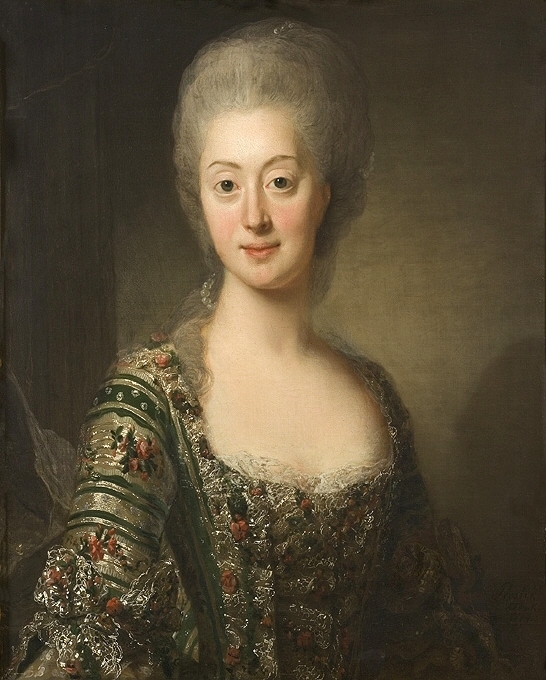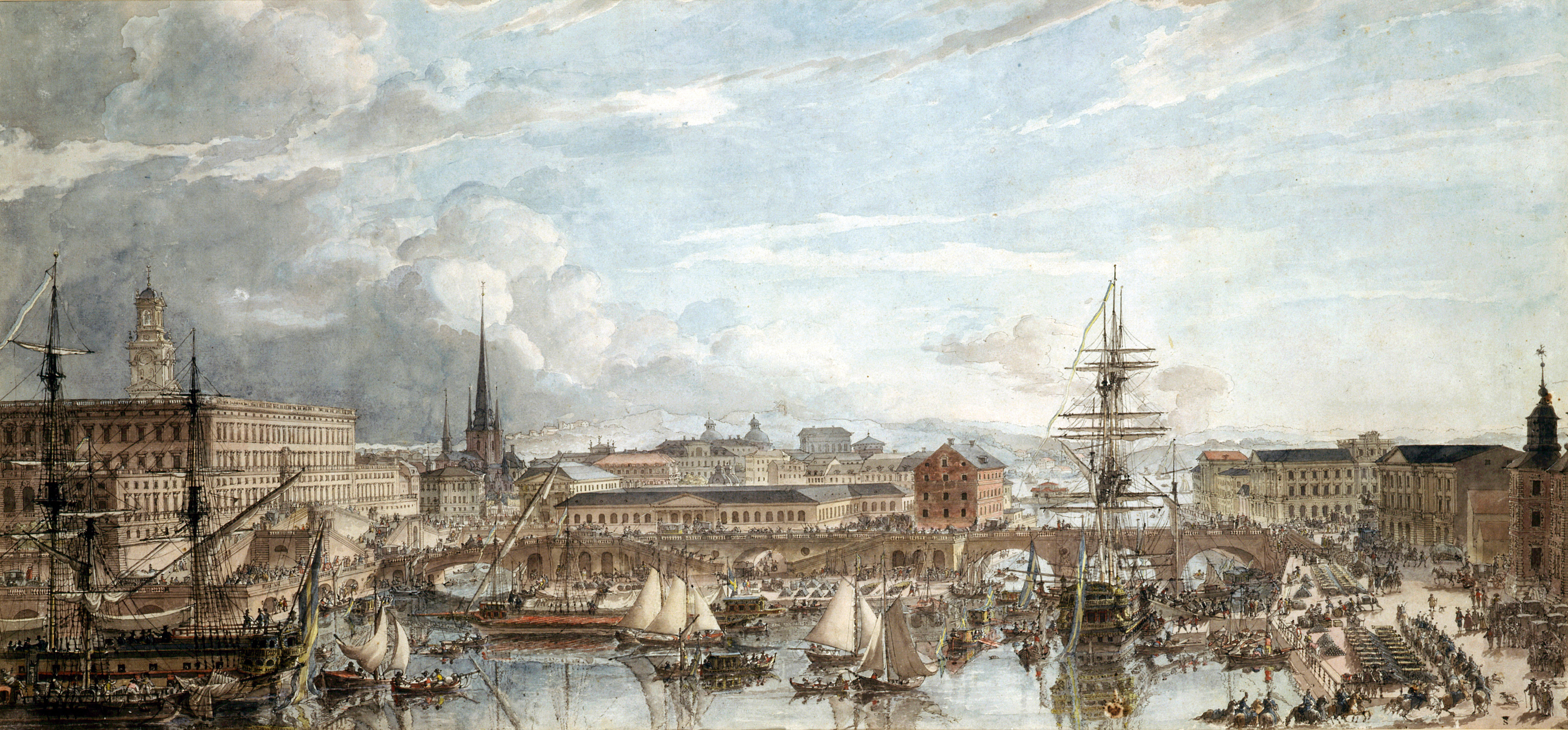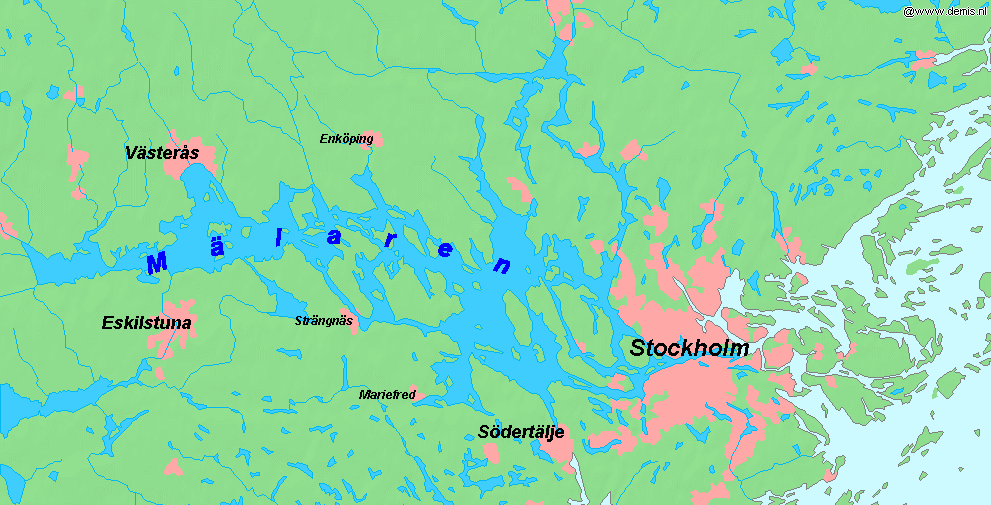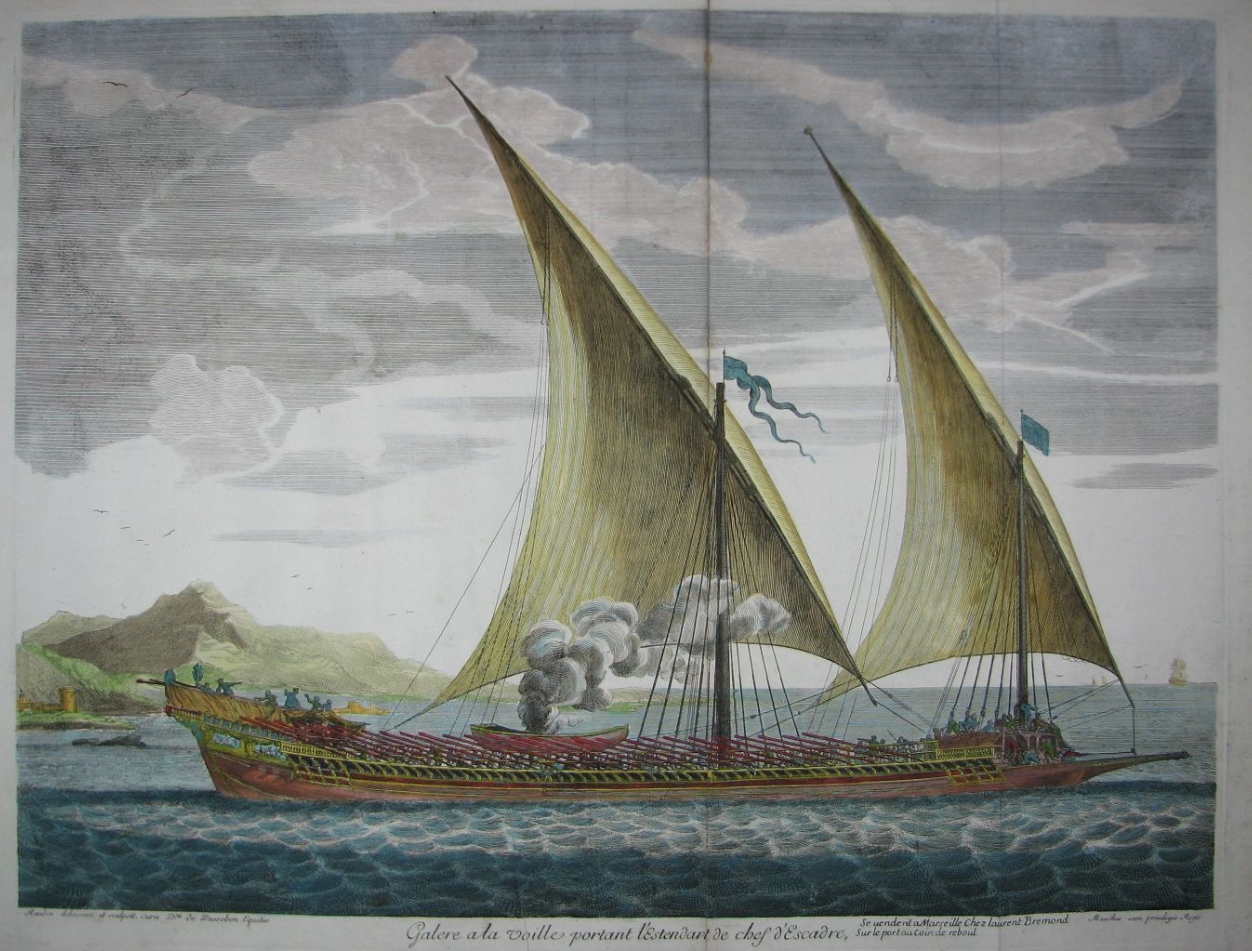|
Amphion (ship)
''Amphion'' was the personal pleasure craft of King Gustav III of Sweden. She was designed by Fredrik Henrik af Chapman, built at Djurgårdsvarvet in Stockholm in the summer of 1778, and launched the same year. ''Amphion'', named after Zeus' son and culture patron in Greek mythology, served as a royal yacht and headquarters ship. The ship was essentially a modified ''turuma'', a type of shallow-draught frigate that served in the Swedish archipelago fleet. She was equipped with oars to allow her maneuverability of a galley while retaining a broadside of heavy guns and a full rig. She was equivalent to similar "archipelago frigates" of the archipelago fleet, but at Gustav III's request, she was built without heavy cannons and therefore differed significantly from the other ships of the same type. ''Amphion'' turned out to be one of Chapman's few failures as a ship designer. She suffered from poor seakeeping ability and was also too heavy to row. On her maiden voyage from Karlskrona ... [...More Info...] [...Related Items...] OR: [Wikipedia] [Google] [Baidu] |
Gustav III
Gustav III (29 March 1792), also called ''Gustavus III'', was King of Sweden from 1771 until his assassination in 1792. He was the eldest son of King Adolf Frederick and Queen Louisa Ulrika of Sweden. Gustav was a vocal opponent of what he saw as the abuse of political privileges seized by the Swedish nobility, nobility since the death of King Charles XII of Sweden, Charles XII in the Great Northern War. Seizing power from the government in a coup d'état, called the Revolution of 1772, Swedish Revolution, in 1772, that ended the Age of Liberty, he initiated a campaign to restore a measure of royal autocracy. This was completed by the Union and Security Act of 1789, which swept away most of the powers exercised by the Swedish Riksdag of the Estates, Riksdag of the estates during the Age of Liberty, but at the same time it opened up the government for all citizens, thereby breaking the privileges of the nobility. A believer in enlightened absolutism, Gustav spent considerable pu ... [...More Info...] [...Related Items...] OR: [Wikipedia] [Google] [Baidu] |
Frigate
A frigate () is a type of warship. In different eras, the roles and capabilities of ships classified as frigates have varied. The name frigate in the 17th to early 18th centuries was given to any full-rigged ship built for speed and maneuverability, intended to be used in scouting, escort and patrol roles. The term was applied loosely to ships varying greatly in design. In the second quarter of the 18th century, what is now generally regarded as the 'true frigate' was developed in France. This type of vessel was characterised by possessing only one armed deck, with an unarmed deck below it used for berthing the crew. Late in the 19th century (British and French prototypes were constructed in 1858), a type of powerful ironclad warships was developed, and because they had a single gun deck, the term 'frigate' was used to describe them. Later developments in ironclad ships rendered the 'frigate' designation obsolete and the term fell out of favour. During the Second World War ... [...More Info...] [...Related Items...] OR: [Wikipedia] [Google] [Baidu] |
Ships Of Sweden
A ship is a large vessel that travels the world's oceans and other navigable waterways, carrying cargo or passengers, or in support of specialized missions, such as defense, research and fishing. Ships are generally distinguished from boats, based on size, shape, load capacity and purpose. Ships have supported exploration, trade, warfare, migration, colonization, and science. Ship transport is responsible for the largest portion of world commerce. The word ''ship'' has meant, depending on the era and the context, either just a large vessel or specifically a ship-rigged sailing ship with three or more masts, each of which is square-rigged. The earliest historical evidence of boats is found in Egypt during the 4th millennium BCE. In 2024, ships had a global cargo capacity of 2.4 billion tons, with the three largest classes being ships carrying dry bulk (43%), oil tankers (28%) and container ships (14%). Nomenclature Ships are typically larger than boats, but there is no ... [...More Info...] [...Related Items...] OR: [Wikipedia] [Google] [Baidu] |
Daniel Gibson Harris
Daniel Gibson Harris (1915–2007) was an accountant, a British agent during World War II and a writer on Swedish naval history. He was born in Great Missenden, Buckinghamshire, England and, after attending Sherborne School, trained as a chartered accountant. He joined the Royal Naval Supplementary Volunteer Reserve but, having learned Swedish, was sent in 1940 to the British embassy in Stockholm as Assistant Naval Attache, and remained there for the rest of the war. During Operation Rheinübung, together with his superior, Captain Henry Denham, he obtained details of the current position of the '' Bismarck'' - this information then led to its chase and eventual sinking by the British Navy. In 1943, he met and married Marianne Syk - their marriage continued until his death. Towards the end of his life, he wrote and published a memoir, ''Observed Secretly: Northern Window'' about his experiences during the War. After the war, Harris remained in Stockholm for a while as an employee ... [...More Info...] [...Related Items...] OR: [Wikipedia] [Google] [Baidu] |
Figurehead
In politics, a figurehead is a practice of who ''de jure'' (in name or by law) appears to hold an important and often supremely powerful title or office, yet '' de facto'' (in reality) exercises little to no actual power. This usually means that they are head of state, but not head of government. The metaphor derives from the carved figurehead at the prow of a sailing ship. Examples Heads of state in most constitutional monarchies and parliamentary republics are often considered to be figureheads. Commonly cited ones include the monarch of the United Kingdom, who is also head of state of the other Commonwealth realms and head of the Commonwealth, but has no power over the nations in which the sovereign is not head of government and does not exercise power in the realms on their own initiative. Other figureheads include the Emperor of Japan and the Swedish monarch, as well as presidents in a majority of parliamentary republics, such as the presidents of Austria, Bangladesh, ... [...More Info...] [...Related Items...] OR: [Wikipedia] [Google] [Baidu] |
Russo-Swedish War (1788–1790)
The Russo-Swedish War of 1788–1790 was fought between Gustavian era, Sweden and Russian Empire, Russia from June 1788 to August 1790. The war was ended by the Treaty of Värälä on 14 August 1790 and took place concomitantly with both the Austro-Turkish War (1788–1791), Russo-Turkish War (1787–1792) and Theatre War. The war was, overall, mostly insignificant for the parties involved. King Gustav III, Gustav III of Sweden initiated the war for domestic political reasons, hoping to gain support from the opposition. Despite forming an alliance with the Ottoman Empire, Sweden failed to secure support from Kingdom of Great Britain, Great Britain, the Dutch Republic, and Kingdom of Prussia, Prussia. Sweden's initial plan to attack Saint Petersburg and instigate a coup to depose Empress Catherine the Great, Catherine II did not materialize. The war led to Denmark–Norway declaring war on Sweden, but peace was eventually signed on 9 July 1789 after diplomatic intervention by Gr ... [...More Info...] [...Related Items...] OR: [Wikipedia] [Google] [Baidu] |
Mälaren
Mälaren ( , , or ), historically referred to as Lake Malar in English, is the third-largest freshwater lake in Sweden (after Vänern and Vättern). Its area is and its greatest depth is 64 m (210 ft). Mälaren spans from east to west. The lake drains, from south-west to north-east, into the Baltic Sea through its natural outlets Norrström and Söderström (as it flows around Stadsholmen island) and through the artificial Södertälje Canal and Hammarbyleden waterway. The easternmost bay of Mälaren, in central Stockholm, is called Riddarfjärden. The lake is located in Svealand and bounded by the provinces of Uppland, Södermanland and Västmanland. The two largest islands in Mälaren are Selaön () and Svartsjölandet (). Mälaren is low-lying and mostly relatively shallow. Being a quite narrow and shallow lake, Mälaren has bridge crossings between Eskilstuna and Västerås with two crossings on the western end at Kvicksund and three separate bridges between St ... [...More Info...] [...Related Items...] OR: [Wikipedia] [Google] [Baidu] |
Dalarö
Dalarö is a locality situated in Haninge Municipality, Stockholm County, Sweden with 1,199 inhabitants in 2010. It is situated south-east of Stockholm and is part of Metropolitan Stockholm and serves as a recreational summer spot for Stockholmers. At the beginning of the year 2004, the automobile company Volvo used the town for the unconventional '' The Mystery of Dalarö'' advertising campaign. Dalarö is Haninge Municipality's oldest locality, originally an old maritime pilot and customs Customs is an authority or Government agency, agency in a country responsible for collecting tariffs and for controlling International trade, the flow of goods, including animals, transports, personal effects, and hazardous items, into and out ... community. Today Dalarö is largely characterized by the developments which were added in the late 1800s, when the area became a popular summer resort for Stockholmers. Dalarö has long been home to Swedish high society's seaside houses. Sinc ... [...More Info...] [...Related Items...] OR: [Wikipedia] [Google] [Baidu] |
Karlskrona
Karlskrona (, , ) is a locality and the seat of Karlskrona Municipality, Blekinge County, Sweden with a population of 66,675 in 2018. It is also the capital of Blekinge County. Karlskrona is known as Sweden's only baroque city and is host to Sweden's largest naval base and the headquarters of the Swedish Coast Guard. Historically, the city has been home to a German minority, thus enabling the formation of a German Congregational church. It also counted Jewish people in its population. In 1998, parts of the city, including the Karlskrona Naval Base, was declared a UNESCO World Heritage Site. History Under Danish rule, the island on which Karlskrona was built, Trossö, was used chiefly for farming and grazing. During the 16th century, it was owned by the farmer Offe Månsson. A couple of kilometers away on the mainland there was another, older town called '' Lyckeby'' or ''Lyckå'' (today a city district of Karlskrona). In 1599, King Christian IV of Denmark founded a ... [...More Info...] [...Related Items...] OR: [Wikipedia] [Google] [Baidu] |
Galley
A galley is a type of ship optimised for propulsion by oars. Galleys were historically used for naval warfare, warfare, Maritime transport, trade, and piracy mostly in the seas surrounding Europe. It developed in the Mediterranean world during Classical antiquity, antiquity and continued to exist in various forms until the early 19th century. It typically had a long, slender hull, shallow draft (hull), draft, and often a low freeboard (nautical), freeboard. Most types of galleys also had sails that could be used in favourable winds, but they relied primarily on oars to move independently of winds and currents or in battle. The term "galley" originated from a Greek term for a small type of galley and came in use in English from about 1300. It has occasionally been used for unrelated vessels with similar military functions as galley but which were not Mediterranean in origin, such as medieval Scandinavian longships, 16th-century Ghali (ship), Acehnese ghalis and 18th-century North ... [...More Info...] [...Related Items...] OR: [Wikipedia] [Google] [Baidu] |
Archipelago Fleet
The archipelago fleet (), officially the "fleet of the army" (), was a Navy, maritime branch of the Swedish Armed Forces which existed between 1756 and 1823. Its purpose was to protect the coasts of Sweden, which was surrounded by a natural barrier of archipelagoes (or skerry, skerries). Throughout its existence, the fleet was a largely independent arm of the Swedish Army, separate from the Swedish Navy, with the exception of a few years in the late 1760s. In a number of respects, it was a precursor of the Swedish Coastal Artillery and its coastal fleet. The fleet's vessels consisted of traditional Mediterranean-style galleys, Pram (ship), prams, gunboats and specially designed Broadside (naval), broadside-armed "archipelago frigates". All types had the ability to operate under oars and a small draft (hull), draft, enabling them to navigate the shallow and often treacherous inshore waters. The archipelago fleet was active in several wars from 1757 to 1814, such as the Seven Years' ... [...More Info...] [...Related Items...] OR: [Wikipedia] [Google] [Baidu] |






